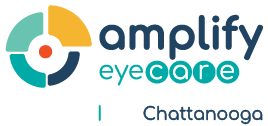A lot of people probably don't realize that there are over 17 visual skills that we use to interpret and understand the world around us. What we commonly associate as the standard for good vision, 20/20, is only one of these skills used to facilitate daily vision. These skills are critical to children in an academic setting, as even a small deficiency in one skill can make tasks like reading extremely challenging.
What are the 17 key visual skills?
- Visual Memory describes our ability to recall images and words from the past. Our visual memory comes in handy when we copy material from a board into a notebook or describe an image we've seen in an email or document. A poor visual memory can negatively affect academic achievement and work performance.
- Binocular Coordination occurs when our eyes work together in concert to focus on the same thing at the same time. It is especially useful when reading.
- Eye Movement Control describes the ability to focus on a person, picture, or object by moving your eyes together. Coordination of the six ocular muscles is required for this skill. Reading and writing are made easier with this particular skill.
- Pursuits ensure that our eyes maintain smooth transitions between different points. Following or tracking a ball's movement during sports requires this skill.
- Convergence describes how our eyes work together, whether they are looking inward or forward. It is essential for professional, academic, and athletic success.
- Accommodation Flexibility is necessary in order to accurately see things close up and far away. It helps a lot when driving and taking notice of signs.
- Saccades are quick movements that occur while looking at one or more points. Reading and writing require smooth eye movement across a sentence.
- Accommodation Endurance describes the eyes' ability to focus close up or far away. While using a computer or attending to tasks for long periods, this is helpful.
- Spatial/ Visual Learning refers to the ability to analyze and evaluate what you have seen. It is crucial to understanding computations.
- Depth Perception is the ability to distinguish nearby objects from far away objects, especially as they relate to one another. Academic and athletic success require this ability.
- Gross Visual-Motor is the ability to use cues to avoid bumping into things while moving through our environment. This is crucial for navigating unfamiliar environments and preventing injuries.
- Central Visual Acuity refers to the ability to see clearly. A standard eye chart is used to measure how well you can see from a certain distance. Most commonly, it is used to determine if your vision is 20/20 or a variation. People without this skill usually need corrective lenses.
- Peripheral Vision (Side Vision) is our ability to see objects from the side without needing to move our heads or look at them. We can use this during sports activities and to determine the safety of our surroundings.
- Color Perception is the ability to distinguish colors from one another. This is useful in determining color coded systems such as traffic lights and safety warnings, in addition to observing movement of objects similar to their background color.
- Fine Visual-Motor movements help us focus on tasks requiring small movements and attention. Sewing, texting, and pixelated art require this skill.
- Visual Integration enables us to combine the information we receive from all of our senses simultaneously. Crossing the street while drinking coffee, watching what we're eating at a restaurant, playing the piano while reading sheet music, or taking notes about what the teacher wrote on the board while listening to him speak, are examples of this skill.
- Visual Perception describes our awareness of our environment and what is happening around us. It describes everything we are capable of seeing within our vision's full extent. Visual perception problems can compromise fine motor movements and independence.
Get superior care when you schedule an appointment for an eye exam at our renowned optometry clinic in Hixson, conveniently serving patients from Chattanooga, Cleveland, and Middle Valley.
Call
(423) 321-8233 or
fill out this form to make an appointment today.







